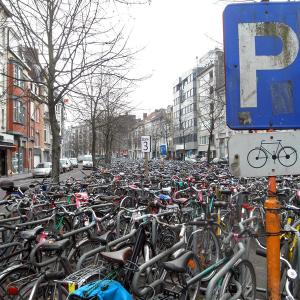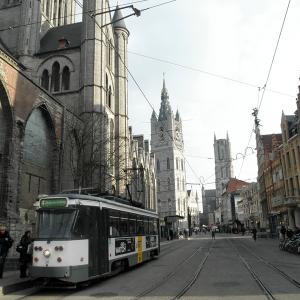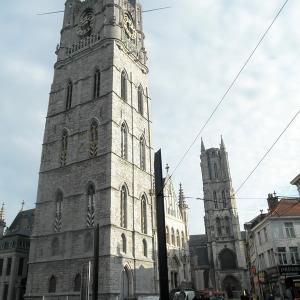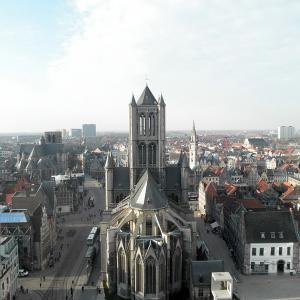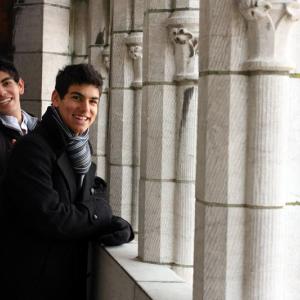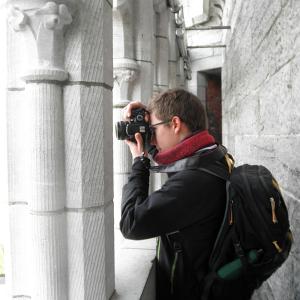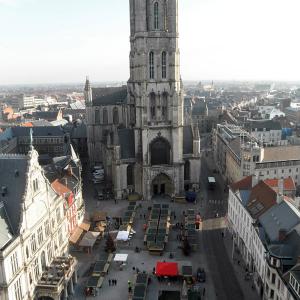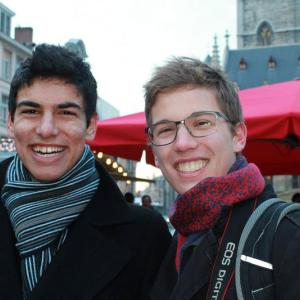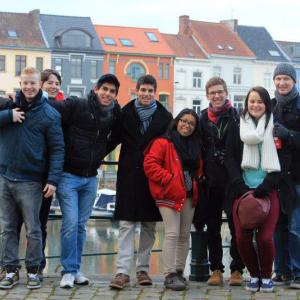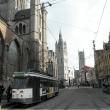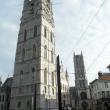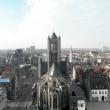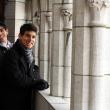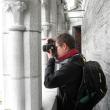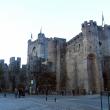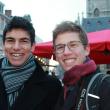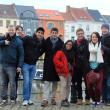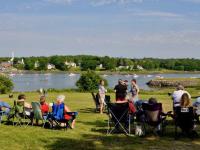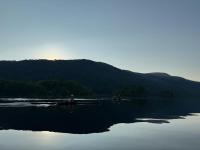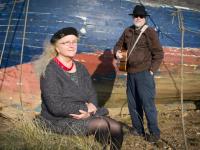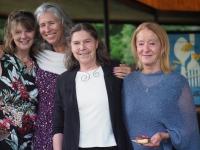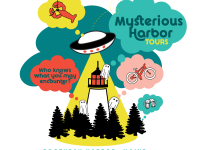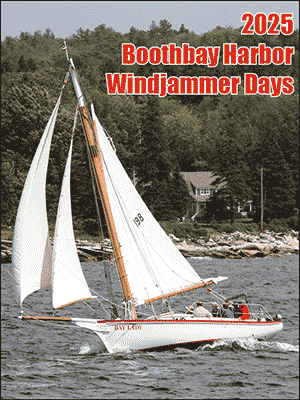Notes from abroad: BELFAST—BELGIQUE
Ari Snider: Flemish common folk
Mon, 12/31/2012 - 10:30am
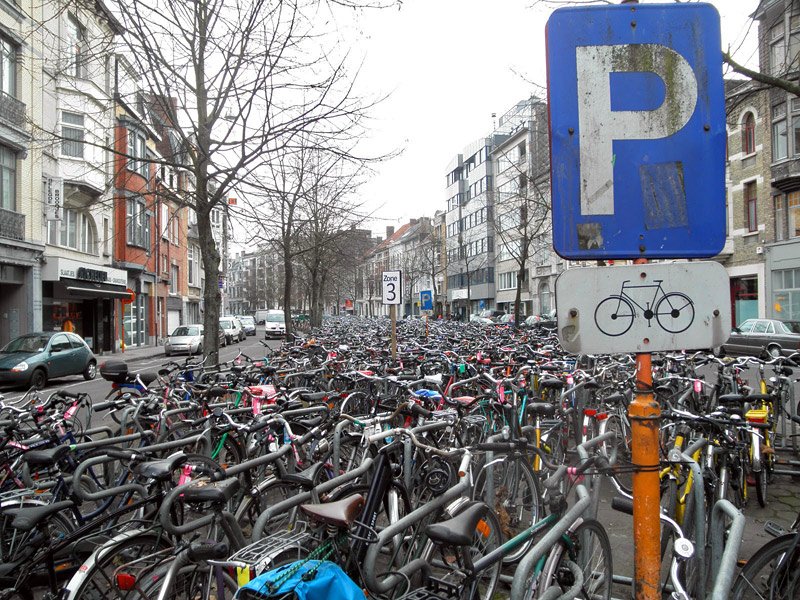 Overflow bicycle parking next to the train station in Ghent. (Photo by Ari Snider)
Overflow bicycle parking next to the train station in Ghent. (Photo by Ari Snider)
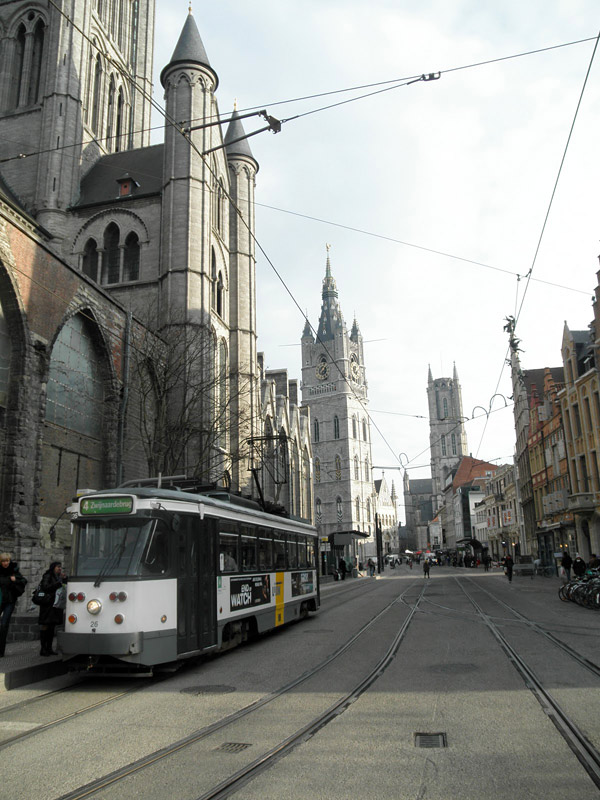 Ghent in a nutshell: Tram stop at the feet of cathedral number one, belfry and cathedral number two in the background. See any cars? (Photo by Ari Snider)
Ghent in a nutshell: Tram stop at the feet of cathedral number one, belfry and cathedral number two in the background. See any cars? (Photo by Ari Snider)
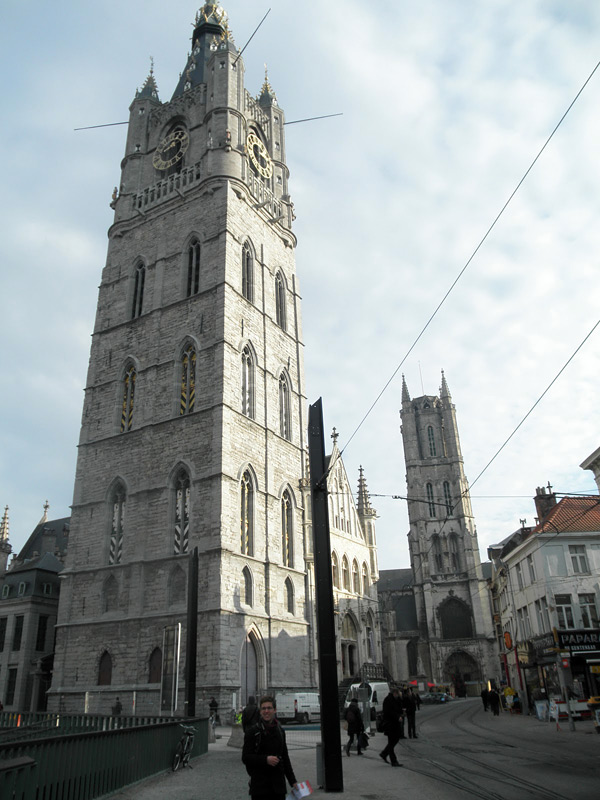 The belfry, cathedral number two just behind. Kevin, our fearless map-interpreter, in the direct foreground. (Photo by Ari Snider)
The belfry, cathedral number two just behind. Kevin, our fearless map-interpreter, in the direct foreground. (Photo by Ari Snider)
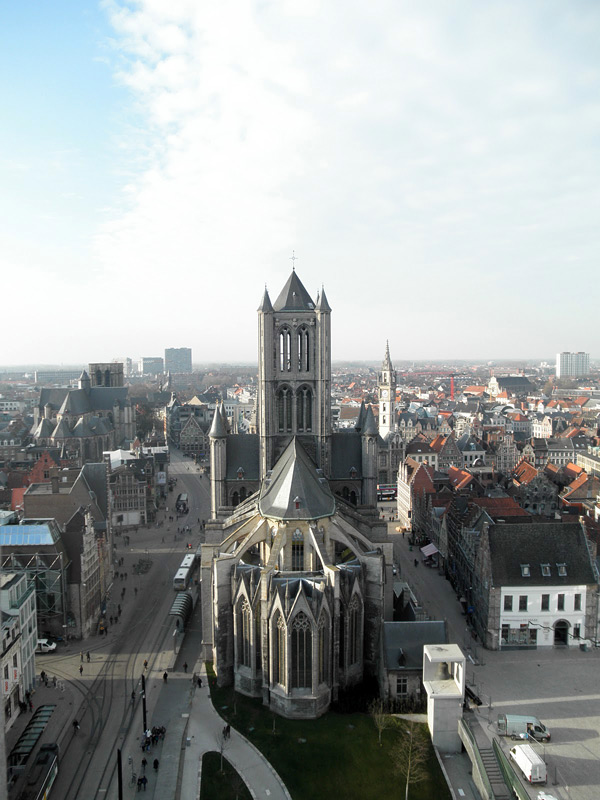 A few minutes and 256 steps later, looking out of the belfry at cathedral number one (ok, a little more than a few minutes...). (Photo by Ari Snider)
A few minutes and 256 steps later, looking out of the belfry at cathedral number one (ok, a little more than a few minutes...). (Photo by Ari Snider)
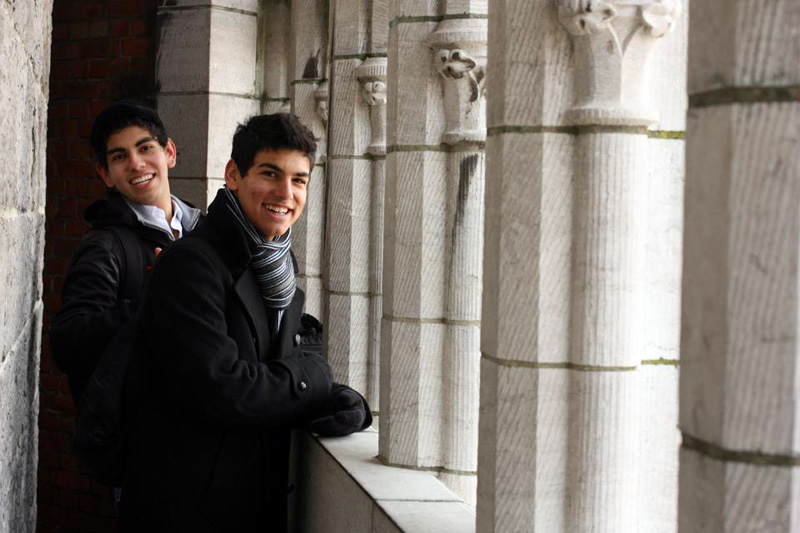 Fernando and I, rulers of all that allows free admission for kids under 19. (Photo by Kevin Celustka, royal photographer)
Fernando and I, rulers of all that allows free admission for kids under 19. (Photo by Kevin Celustka, royal photographer)
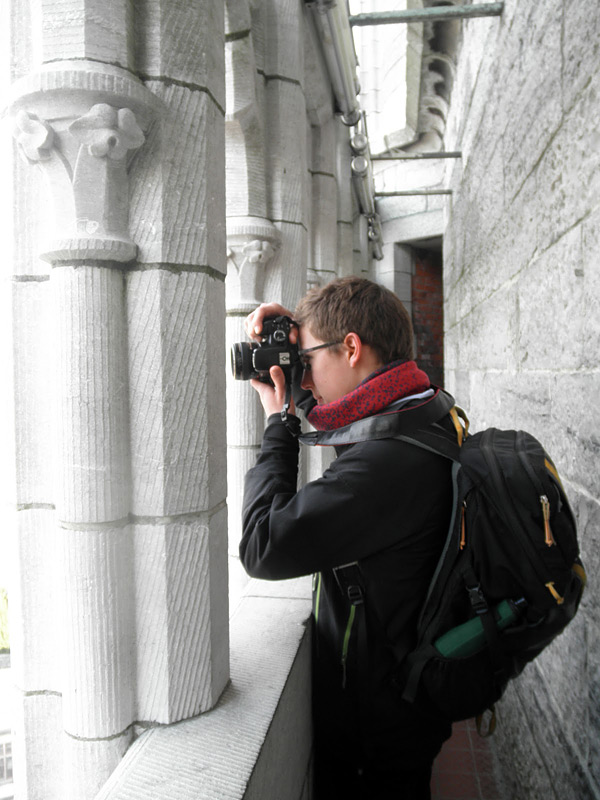 A rare shot of the man behind the lens. (Photo by Ari Snider)
A rare shot of the man behind the lens. (Photo by Ari Snider)
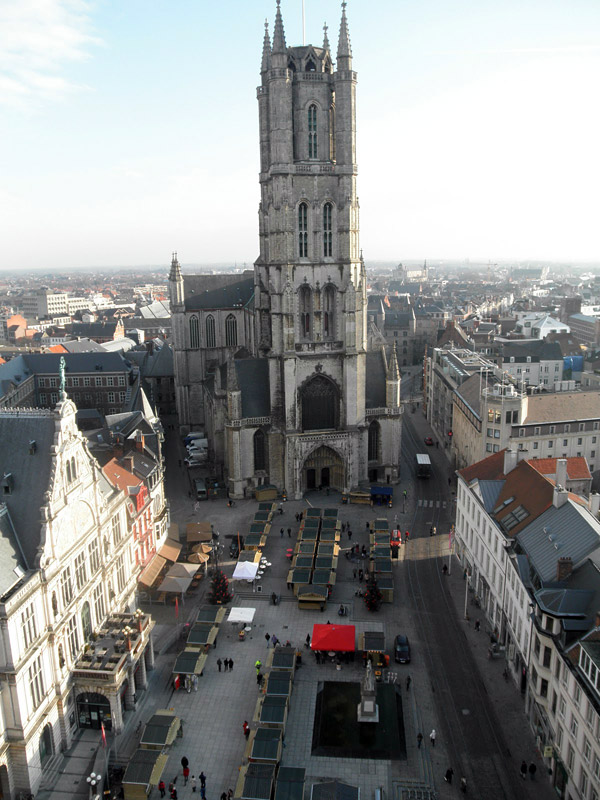 From the other side of the belfry, looking at cathedral number two, Christmas market below. From my understanding, the cathedrals were built by two of Ghent's most influential families, in the same spirit with which one might buy a larger car to impress one's neighbors.
From the other side of the belfry, looking at cathedral number two, Christmas market below. From my understanding, the cathedrals were built by two of Ghent's most influential families, in the same spirit with which one might buy a larger car to impress one's neighbors.
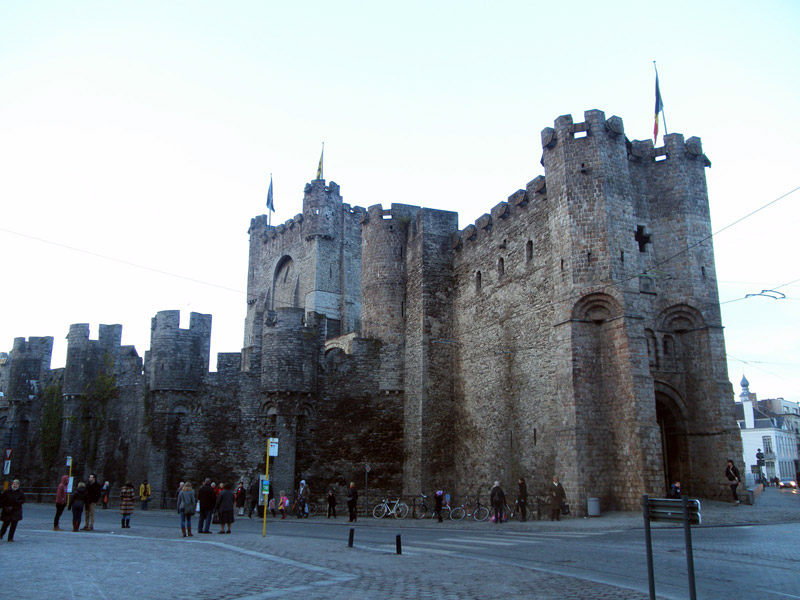 The castle. Once the bastion of divine royal rule, it is now overrun with commoners. (Photo by Ari Snider)
The castle. Once the bastion of divine royal rule, it is now overrun with commoners. (Photo by Ari Snider)
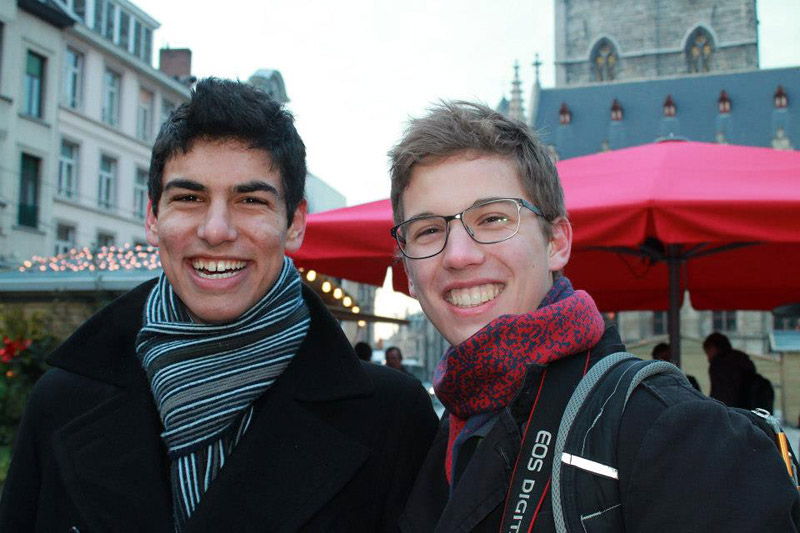 The commoners, for their part, couldn't have been happier. (photo by Lela Dewey)
The commoners, for their part, couldn't have been happier. (photo by Lela Dewey)
 Our group by the end of the day. From left: Brendan, Orion, Fernando, myself, Mayra, Kevin, Carmen, and Braden. (Photo by Lela Dewey)
Our group by the end of the day. From left: Brendan, Orion, Fernando, myself, Mayra, Kevin, Carmen, and Braden. (Photo by Lela Dewey)
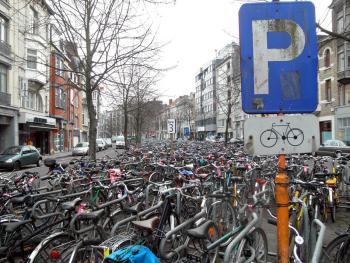 Overflow bicycle parking next to the train station in Ghent. (Photo by Ari Snider)
Overflow bicycle parking next to the train station in Ghent. (Photo by Ari Snider)
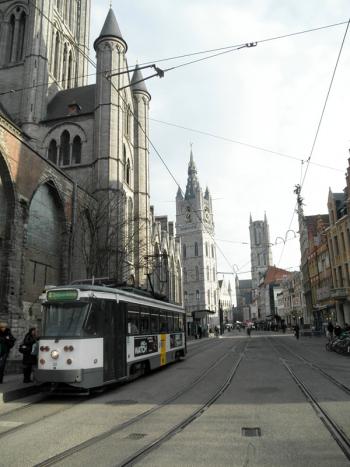 Ghent in a nutshell: Tram stop at the feet of cathedral number one, belfry and cathedral number two in the background. See any cars? (Photo by Ari Snider)
Ghent in a nutshell: Tram stop at the feet of cathedral number one, belfry and cathedral number two in the background. See any cars? (Photo by Ari Snider)
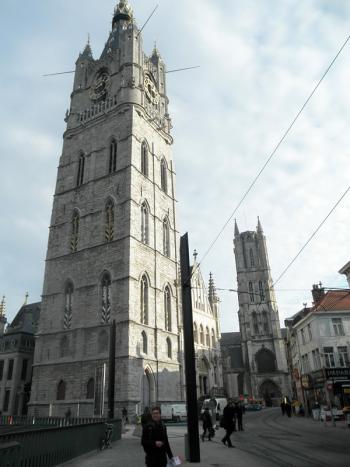 The belfry, cathedral number two just behind. Kevin, our fearless map-interpreter, in the direct foreground. (Photo by Ari Snider)
The belfry, cathedral number two just behind. Kevin, our fearless map-interpreter, in the direct foreground. (Photo by Ari Snider)
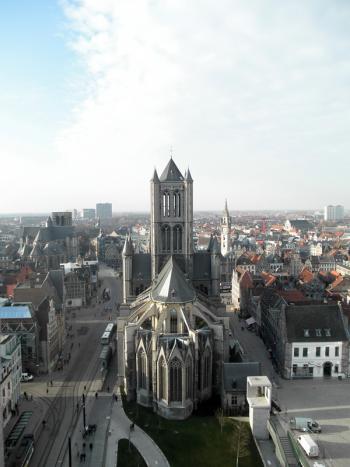 A few minutes and 256 steps later, looking out of the belfry at cathedral number one (ok, a little more than a few minutes...). (Photo by Ari Snider)
A few minutes and 256 steps later, looking out of the belfry at cathedral number one (ok, a little more than a few minutes...). (Photo by Ari Snider)
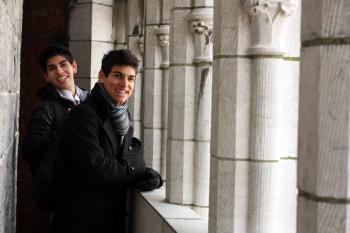 Fernando and I, rulers of all that allows free admission for kids under 19. (Photo by Kevin Celustka, royal photographer)
Fernando and I, rulers of all that allows free admission for kids under 19. (Photo by Kevin Celustka, royal photographer)
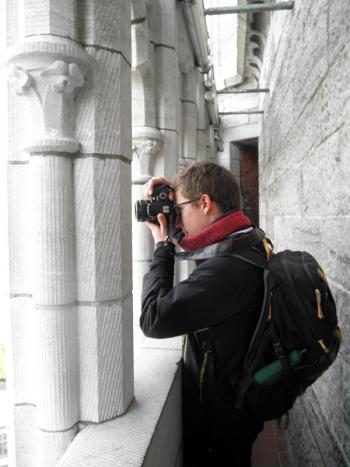 A rare shot of the man behind the lens. (Photo by Ari Snider)
A rare shot of the man behind the lens. (Photo by Ari Snider)
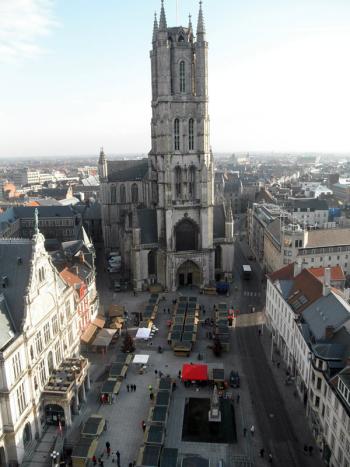 From the other side of the belfry, looking at cathedral number two, Christmas market below. From my understanding, the cathedrals were built by two of Ghent's most influential families, in the same spirit with which one might buy a larger car to impress one's neighbors.
From the other side of the belfry, looking at cathedral number two, Christmas market below. From my understanding, the cathedrals were built by two of Ghent's most influential families, in the same spirit with which one might buy a larger car to impress one's neighbors.
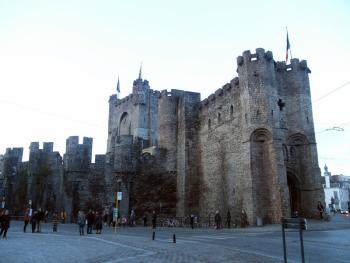 The castle. Once the bastion of divine royal rule, it is now overrun with commoners. (Photo by Ari Snider)
The castle. Once the bastion of divine royal rule, it is now overrun with commoners. (Photo by Ari Snider)
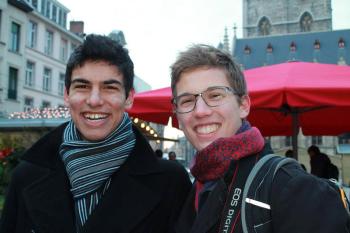 The commoners, for their part, couldn't have been happier. (photo by Lela Dewey)
The commoners, for their part, couldn't have been happier. (photo by Lela Dewey)
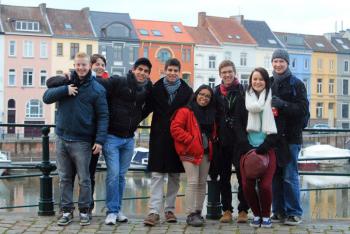 Our group by the end of the day. From left: Brendan, Orion, Fernando, myself, Mayra, Kevin, Carmen, and Braden. (Photo by Lela Dewey)
Our group by the end of the day. From left: Brendan, Orion, Fernando, myself, Mayra, Kevin, Carmen, and Braden. (Photo by Lela Dewey)
Belgium is a divided country. One need only look at a map to see the black line that snakes across the little country, cutting it in half. To the North lies Flanders and its Dutch-speaking inhabitants, to the South Francophone Wallonia. Hovering just above the line is the Brussels-Capital Region, which is bilingual but home to a Francophone majority. The language divide has intrigued me ever since I was accepted into the Belgian Rotary Exchange program, and it has been fascinating for me to explore that division from the ground.
But looking at the domestic sociopolitical divisions of a foreign country is best done with friends. Thus, two weeks ago I found myself in the Brussels Central train station with Kevin and Fernando, two of my closest compatriots here in Belgium. We had planned for a day in Ghent, a beautiful city in the heart of Flanders.
More exchange students would meet us later, but it was just the three of us sitting together as the train rumbled out of Brussels.
When we hopped out into the brisk Flemish air, we were confronted with rows upon rows of bicycles. Like most other Flemish train stations, St. Pieter's bicycle parking is a veritable sea of classic Dutch spinners. The abundance of two-wheeled transportation is perhaps the most obvious connection between the Flemish and their northern cousins, the Dutch.
The second most obvious connection to Holland is the orderliness. The roads are neatly divided into car, bicycle, and public transportation lanes. Bus and tram stops are complete with screens displaying the next arrival times, which are never more than three minutes apart. Most of the city is made of grey stone clean enough to bely its Medieval origin. Even the sidewalks are nearly unblemished.
Ari Snider is a high school junior from Belfast studying in Belgium through Rotary International. He currently lives with a host family in Waterloo. His discoveries and adventures abroad have been the subject of his blog Belfast/Belgique
A belfry and two massive cathedrals dominate the city center, relics of Ghent's royal might during the Middle Ages. In the very shadow of these monuments of feudal domination, however, The People are flourishing. Central Ghent is car-free, reserved instead for pedestrians, cyclists, and trams. A Christmas market had sprung up on one of the wide cobblestone plazas that lie beneath the cathedrals, and cyclists zipped through the open squares.After visiting S.M.A.K., Ghent's contemporary art museum, Fernando, Kevin, and I plucked up our courage to climb the belfry's 256 winding stairs for a panoramic view of the city. The crisp wind at the top cooled us quickly after the precipitous climb, and the views were spectacular. The cathedrals loomed before us as we leaned through the arched stone windows. Beyond us on all sides Ghent spread out into a field of pointed roofs. Directly below us holiday shoppers milled about the Christmas market as the trams snaked quietly along their tracks.
We joined with more exchange student friends that afternoon for a visit to the castle, conveniently located steps from the city center. The castle, along with the belfry, the art museum, and most all public attractions in Ghent, offers free admission for ages 18 and under.
I returned back across the language divide that night. An hour after bidding farewell to my friends outside the castle, I stepped out of the Braine L'Alleud train station and into a cold, dark drizzle. The station's paint was peeling, and sullied blotches of chewing gum speckle the platform. Outside the station, the buildings were newer and made of standard brick. Streetlights cast a pale light on the flat, wet tarmac. But there, idling quietly next to the dirty sidewalk, was my bus. It was bright and warm inside, and in a minute I was on my way home.
Event Date
Address
United States
Standard Post

